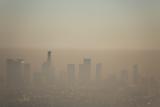Browse CMAQ Applications
The CMAQ system has been used to address major environmental issues. Click on a category below to learn about the different ways the CMAQ model is applied to help communities, states and countries improve human health and the environment on global to local scales.
EPA Mission Support
Models are widely used to identify sources of air quality problems and to assist in the design of effective strategies to reduce pollutants. Read more about how CMAQ informs federal and state actions:
Evaluation Studies
Evaluation of the CMAQ system has been designed to characterize how model predictions compare to observations, as well as identify what model improvements are needed in future versions of the modeling system. The following are some recent evaluation studies of the CMAQ system:
- Model Evaluation Framework
- Incremental Evaluation of CMAQv5.2
- Improving PM2.5 chemistry in CMAQ
- Air Quality Model Evaluation International Initiative (AQMEII)
- Dynamic Evaluation and Trend Analysis
- Evaluation of CMAQ Applications at Neighborhood Scales
Human Exposure to Pollutants
People are exposed to a number of environmental pollutants as a result of different sources including wildfires, combustion, and agriculture. Learn about how CMAQ model predictions inform human health exposure estimates:
- Modeling Toxic Air Pollutants
- Nitrate in Groundwater
- Air Quality and Climate
- Trends in Air Pollution Exposure
- Projecting Changes to Human Health
Ecosystems and Air Quality
Ecosystem exposure to atmospheric pollutants influences the flow of benefits from nature to people. Listed below are a few examples of how CMAQ is used to predict the exposure of plants, animals, soil, and water to pollutants:
Emerging Applications
As a deterministic model, the CMAQ model lends itself to novel applications. Learn more about emerging applications of the CMAQ model below:





